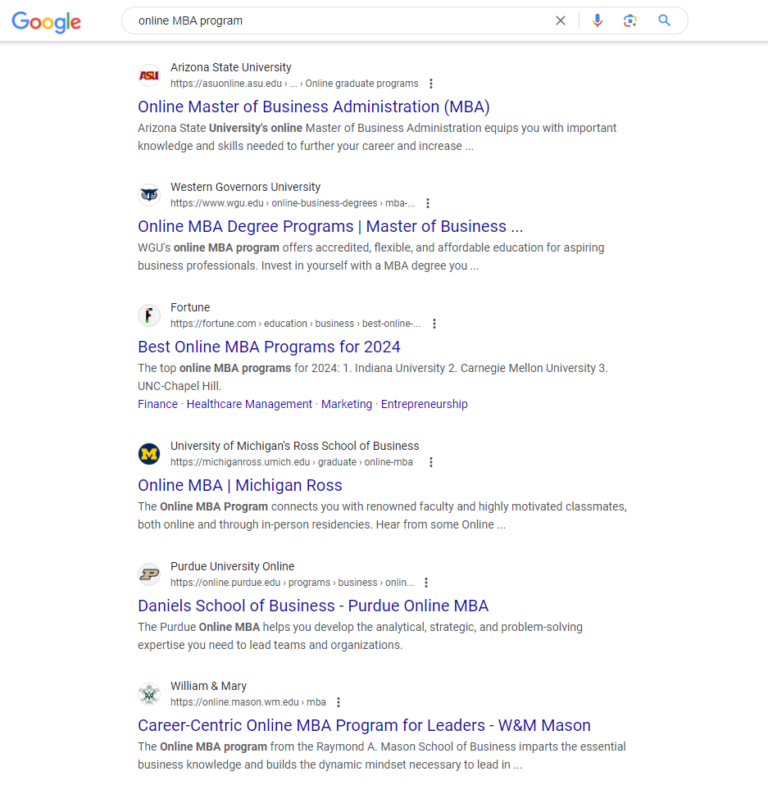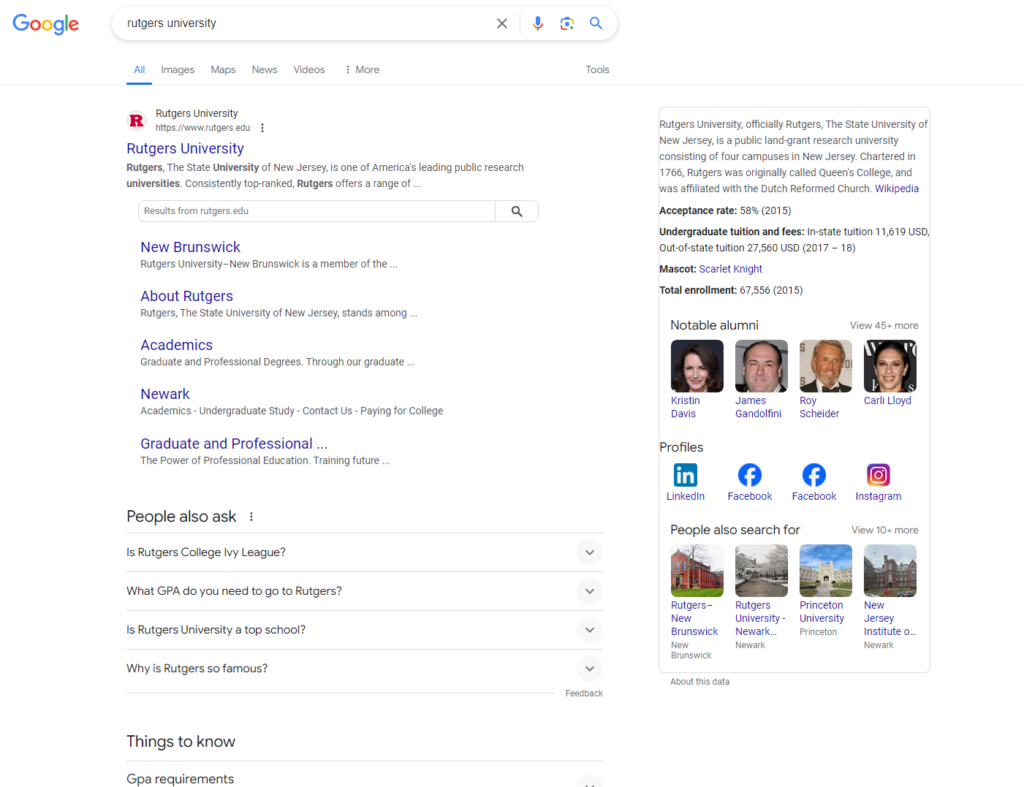

Last updated on

The competition to enroll students has reached unprecedented levels.
Numerous colleges face challenges in distinguishing themselves online and drawing prospective students. Without an effective SEO strategy, your institution risks remaining undiscovered, making it difficult for potential students to locate you.
This encompasses crucial information such as admission procedures, program offerings, extracurricular activities, and other pertinent details that appeal to prospective students.
A robust SEO strategy ensures your presence in search results, enhances brand visibility, builds trust with parents and students, and ultimately drives enrollment numbers.
Here’s a guide on how to implement it effectively:
Identify distinct audience segments, including prospective students, current students, faculty, staff, alumni, and visitors, and prioritize them based on the institution’s objectives. For instance, prospective students often take precedence.
Understanding these audience segments, their specific needs, and browsing behaviors is essential for crafting targeted content and effective SEO strategies.
Considering there are over 17 million high schoolers and 16 million undergraduates in the U.S. (2021 data), pinpointing your target audiences is crucial.
Here’s how to identify them:
Conduct surveys among current students to grasp their motivations and concerns. For example, a brief poll on the school website asking questions like, “What are your top three considerations when selecting a university?” or “What influenced your decision to choose us?” can yield valuable insights.
These responses shed light on why your institution appeals to students, which can be integrated into landing pages, program descriptions, and student experience narratives, ensuring each page resonates with your target audience.
Analyze website analytics to ascertain traffic sources and identify popular pages. This analysis reveals demographic details about your website visitors and how they discover your site. Identifying popular pages also highlights content that strikes a chord with your target audience.
Integrating these insights enables the creation of content that aligns with audience interests and fulfills their search intent.
For colleges and universities, search intent typically falls into four categories: informational, commercial, and transactional, with informational being particularly prevalent.
Understanding search intent is crucial for targeting keywords that align with what users are seeking. Here’s how it breaks down:
Crafting content that resonates with your target audience’s search intent is vital. When your content aligns closely with what users are searching for, it signals relevance to search engines like Google, potentially improving your rankings and driving more traffic. Conducting thorough keyword research ensures your content meets the needs and search behaviors of your audience effectively.
Identify key audience segments such as prospective students, current students, faculty, staff, alumni, and visitors, prioritizing them according to the institution’s strategic objectives. For instance, prospective students typically hold the highest priority.
Understanding the unique needs and search behaviors of these audiences is essential for developing tailored content and effective SEO strategies to engage them.
Considering the substantial numbers—over 17 million high schoolers and 16 million undergraduates in the U.S. (2021 data)—it’s crucial to pinpoint your primary target audiences.
Here’s how to effectively identify them:
Conduct surveys among current students to gain insights into their motivations and concerns. A straightforward poll on the school website, asking questions like “What are the top three factors influencing your choice of university?” or “Why did you select our institution?” can provide valuable insights.
Utilize these responses to enrich content across landing pages, program descriptions, and student experience narratives, ensuring each piece resonates deeply with your target audience.
Utilize website analytics to uncover key traffic sources and identify the most popular pages. This analysis reveals the demographics of your site visitors and how they navigate to your content. Identifying popular pages also highlights content that effectively engages your target audience.
Combining these insights enables the creation of targeted content that not only addresses your audience’s needs but also aligns with their search intentions effectively.
Colleges and universities typically encounter four primary types of search intent: informational, commercial, transactional, and navigational. Among these, the most prevalent intents are informational, commercial, and transactional.
Understanding search intent is crucial for effectively targeting keywords that align with what users are searching for. Here’s a breakdown of these intents:
Producing content that aligns with your target audience’s search intent is crucial. When your content satisfies their intent, it signals relevance to search engines like Google, potentially improving your search rankings and driving more traffic. Conducting thorough keyword research is pivotal in this process, ensuring your content effectively meets the needs and search behaviors of your audience.
Keyword research involves identifying the specific terms that students use when conducting online searches. These keywords are crucial for enhancing your website’s visibility in search engine results. Here are some steps to get started:
By following these strategies, you can effectively enhance your website’s search engine optimization (SEO) and attract a more targeted audience of prospective students.
On-page optimization involves strategically placing relevant keywords within your content to enhance visibility on search engine results pages (SERPs). Here’s how you can optimize:
Title Tags: Your title is crucial as it is among the first elements search engines notice. Include your primary keyword(s) here, ensuring it remains concise and compelling to attract traffic. For instance, consider well-optimized title pages like those for an [online MBA program].

Meta Description: This brief summary appears beneath your title in search results. Use it to persuade users to click on your link by integrating pertinent keywords that provide context to the webpage. For example, refer to ASU’s approach.

Headers: Headers organize your content and aid readability. Incorporate keywords in your main header (H1) and subheaders (H2, H3, etc.) to indicate to search engines the focus of your page.
Body Content: Integrate keywords naturally throughout your content. Utilize variations of your primary keyword, such as long-tail or semantic topics, to avoid redundancy and keyword stuffing. This approach ensures your content remains engaging and informative while enhancing SEO effectiveness.
The primary objective of every search engine is to deliver relevant content to users, and effective technical SEO enhances the accessibility and usability of your website. Focus on these key areas:
Implementing schema markup is particularly crucial as it allows search engines to present richer and more informative snippets in search results, thereby improving the overall discoverability and attractiveness of your content to users.
These improved listings can feature star ratings, images, event dates, and other pertinent information, making your institution’s search results visually engaging and informative. For instance, Rutgers Business School provides an example:

Users can view information such as addresses, tuition fees, campus type, and useful links without needing to visit the website directly.
Studies indicate that structured data boosts click-through rates by presenting users with contextually rich information directly in search results. This not only attracts user attention but also establishes credibility before they even visit the site, thereby driving organic traffic growth.
For schools with multiple campuses, prioritizing local SEO is crucial.
Here’s how you can enhance local SEO effectiveness:
Here are some ways to enhance student engagement using video content:
A well-organized website benefits both users and search engines:
Enhancing your school’s SEO requires a long-term commitment.
Nevertheless, you can begin today by crafting student-targeted content to enhance your brand and bolster credibility. This strategy will boost visibility, attract prospective students, and strengthen your school’s online presence.
Whether your institution is new or well-established, effective SEO practices can significantly contribute to achieving your objectives.
Original news from SearchEngineJournal